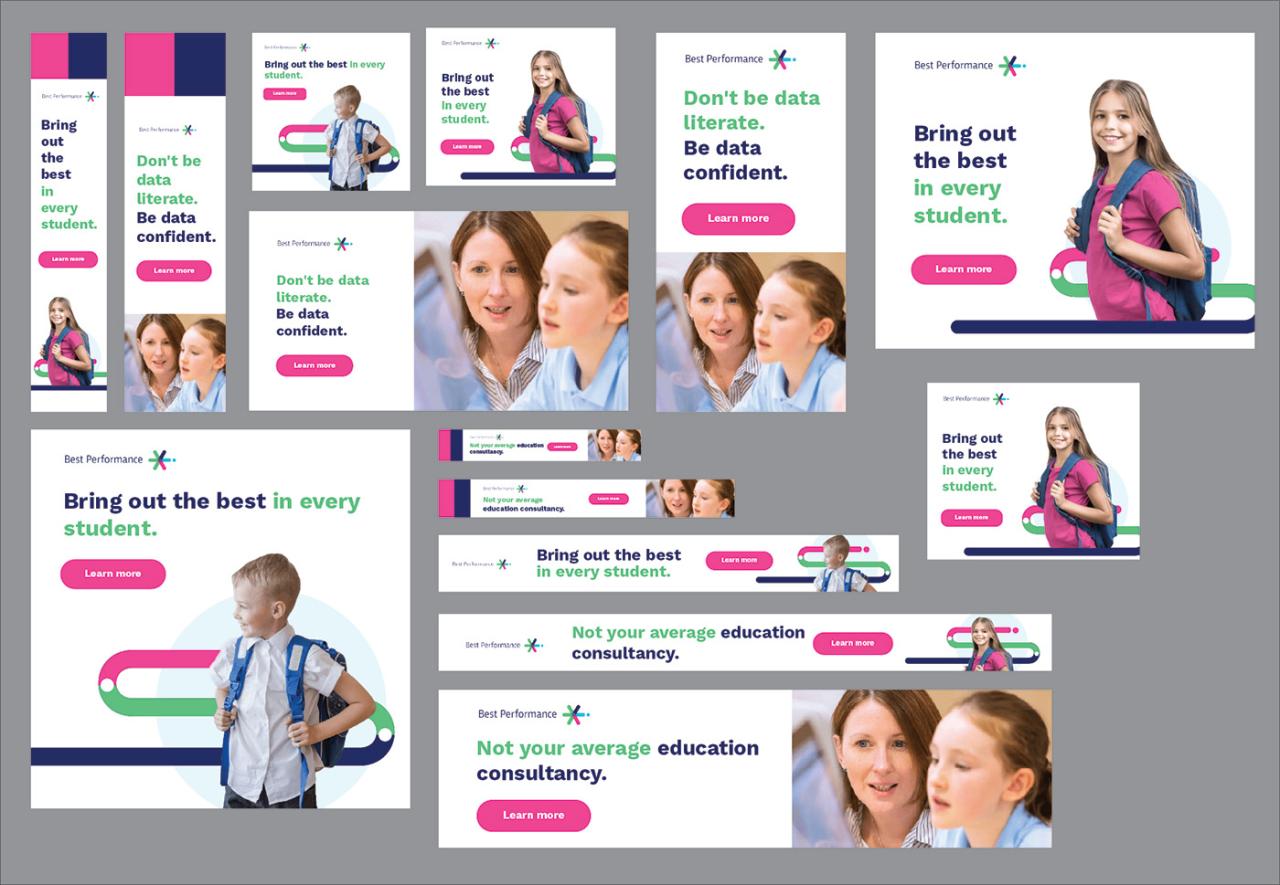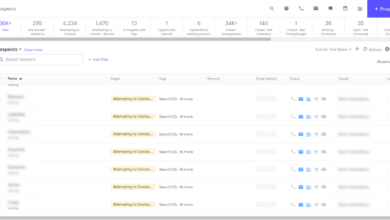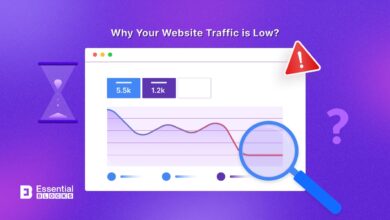
Google Display Countdown Timer Ads A Deep Dive
Google display countdown timer ads are a compelling way to grab attention and drive conversions. These ads use a timer to create a sense of urgency, encouraging users to act quickly. They differ from standard display ads by incorporating a countdown element that adds a dynamic and engaging touch. This guide explores the various facets of these ads, from targeting strategies to creative design, and ultimately how to leverage them for maximum impact.
Understanding the different types of countdown timers used in these ads, such as fixed-time and dynamic timers, is crucial for tailoring your campaign. The dynamic approach often adjusts based on user behavior, while fixed timers offer a simpler, more straightforward approach. This in-depth analysis will illuminate the subtle but important differences between these approaches.
Introduction to Google Display Countdown Timer Ads
Google Display Countdown Timer Ads are a dynamic and engaging form of online advertising. These ads leverage the psychological impact of urgency, encouraging immediate action from potential customers. They typically feature a visually appealing countdown timer prominently displayed, driving a sense of limited availability or time-sensitive offers.These ads are designed to capture attention and motivate users to interact with the advertised product or service.
The countdown timer acts as a compelling call to action, prompting users to complete a desired action, such as visiting a website, making a purchase, or signing up for a newsletter. The functionality of these ads is closely tied to the nature of the product or service being advertised, whether it’s a limited-time sale, a flash promotion, or an event with a specific end date.
Types of Countdown Timers
Different types of countdown timers can be employed in these ads, each tailored to a specific purpose. Simple countdown timers display a remaining time for a particular offer or promotion. These are common for flash sales or limited-time discounts. More complex timers might incorporate a specific timeframe for an event or an ongoing sale, and these can include daily or hourly updates.
The timer’s design can also vary greatly, from minimalist displays to interactive animations, each aiming to maximize engagement and visual appeal.
Differences from Other Display Ad Formats
Countdown timer ads differ significantly from standard display ads. While standard ads often rely on static imagery or text-based information, timer ads add a sense of urgency and a clear deadline. This dynamic element differentiates them from static banner ads and encourages immediate action. The focus shifts from passive viewing to active engagement with the content. The countdown timer acts as a clear signal that the opportunity is temporary, which is often the most important part of the promotion.
Basic Structure of a Countdown Timer Ad
The following table Artikels a simple structure for a countdown timer ad, highlighting its key components. This is a basic representation; real-world ads often incorporate more design elements, animations, and branding.
| Element | Description |
|---|---|
| Headline | A concise and attention-grabbing title related to the offer or promotion. |
| Countdown Timer | A visual display of the remaining time for the offer. |
| Image/Graphic | A visually appealing image or graphic that complements the offer. |
| Call to Action Button | A button encouraging users to click and visit the landing page or complete the action. |
| Background | A supporting backdrop that complements the overall theme of the ad. |
Targeting and Audience Segmentation
Countdown timer ads, with their inherent sense of urgency, are exceptionally effective when paired with precise targeting. Understanding your audience and tailoring your message to their specific needs is crucial for maximizing the impact of these ads. This involves not only identifying the right demographics but also recognizing their interests and behaviors.Effective targeting isn’t just about casting a wide net; it’s about strategically narrowing your focus to reach individuals most likely to engage with your offer.
This approach, combined with compelling visuals and a clear call to action, significantly improves conversion rates.
Targeting Options for Countdown Timer Ads
Various targeting options are available within Google Display Network to reach the right audience. These options go beyond basic demographics and encompass interests, behaviors, and even in-market audiences.
- Demographic Targeting: This is the most basic form of targeting, allowing you to reach specific age groups, genders, parental status, and household income levels. This is often a starting point, but shouldn’t be the sole focus for maximum impact.
- Interest Targeting: This powerful feature allows you to reach users based on their online interests. For example, if you’re promoting a new fitness tracker, you can target users interested in fitness, sports, or healthy living. This ensures your ad appears in front of a highly relevant audience.
- In-Market Targeting: This option targets users actively researching or considering products or services similar to yours. If you’re selling a new smartphone, you can target users actively searching for smartphones, showcasing your product to those already in the market.
- Custom Audiences: Using customer data from your website or email list, you can create custom audiences to reach people who have previously interacted with your brand. This strategy refines your reach to those already familiar with your brand, increasing the likelihood of conversion.
- Remarketing: Similar to custom audiences, remarketing targets users who have previously visited your website or interacted with your ads. It’s an effective strategy for reminding those interested in your product or service about your offer.
Effective Audience Segmentation for Countdown Timer Ads
Crafting a successful strategy for countdown timer ads necessitates a deep understanding of audience segmentation. A segmented approach is far more effective than a broad one.
- Identify Key Demographics: Consider age, location, and interests. For instance, a time-sensitive offer for a vacation package could be effective if targeted towards specific age groups, especially those with a penchant for travel.
- Understand Purchase Behavior: Analyze past purchases, website interactions, and browsing history. This deep dive into user behavior enables the crafting of tailored ads, resulting in a higher conversion rate.
- Leverage Interest Data: Identify specific interests aligned with your product or service. For example, if you’re selling a new type of cooking appliance, targeting users interested in cooking, baking, or specific cuisines like Italian or Mexican, significantly improves the relevance of your ad.
Examples of Audience Segments
Different audience segments can be tailored to different products or services.
- Example 1: A flash sale for a clothing brand could target young adults interested in fashion, and users who have previously interacted with the brand’s website, increasing the chances of re-engagement.
- Example 2: A countdown timer ad for a software upgrade could target professionals working in specific industries, highlighting the benefits and time-sensitive nature of the upgrade.
- Example 3: An online course offering a discount could target students and professionals interested in learning specific skills, making the time-sensitive nature of the offer more appealing.
Comparing and Contrasting Targeting Methods
Traditional display ad targeting often focuses on demographics, while countdown timer ads can utilize a wider range of targeting methods, including interests, behaviors, and custom audiences. This more nuanced approach ensures that the ads are displayed in front of a highly engaged audience, resulting in a higher click-through rate and conversion rate.
Successful Targeting Strategies
A successful strategy leverages a combination of factors, including targeting specific demographics, interests, and behaviors, alongside a strong understanding of the offer’s urgency.
| Targeting Parameter | Description | Example | Impact |
|---|---|---|---|
| Demographics | Age, gender, location | Targeting women aged 25-35 in the San Francisco area | Reaching a specific user segment |
| Interests | Hobbies, activities, topics | Targeting users interested in photography | Increasing ad relevance |
| Behaviors | Online activity, purchase history | Targeting users who have previously visited a photography website | Improving engagement |
| Custom Audiences | Existing customer data | Targeting users who have subscribed to a photography newsletter | Driving conversions from existing customers |
Creative Design and Optimization
Crafting compelling Google Display Countdown Timer ads hinges on a captivating blend of visuals and copy. Effective designs not only grab attention but also communicate the urgency and value proposition of the offer, ultimately driving conversions. A well-designed countdown timer ad can transform a fleeting glance into a significant action.The key to success lies in understanding the psychology behind urgency and leveraging design elements to create a sense of immediacy and desirability.
Visually appealing elements paired with clear and concise messaging create a powerful synergy, maximizing the ad’s impact and ROI. This approach will be explored further through the following sections.
Importance of Compelling Visuals and Copy
Visuals and copy are not merely decorative elements; they are the core drivers of engagement and conversion. High-quality images or graphics, paired with persuasive copy, capture attention and effectively communicate the value proposition. This combination not only enhances brand recognition but also fosters a sense of trust and encourages users to interact with the ad. Images should align with the overall brand identity and resonate with the target audience, reinforcing the message and building brand loyalty.
Strategies for Designing Visually Appealing Countdown Timer Ads
Designing visually appealing countdown timer ads requires a strategic approach. Firstly, ensure that the countdown timer is prominently displayed, making it instantly recognizable and easily understood. Secondly, utilize high-quality images or graphics that are relevant to the offer and target audience. Thirdly, consider the use of contrasting colors and fonts to emphasize the countdown timer and call-to-action elements.
Google display countdown timer ads are a fantastic way to grab attention, but to truly maximize their effectiveness, you need to pair them with clever email capture tricks. These techniques, like using limited-time offers or exclusive content behind a signup form, can boost conversion rates dramatically. For more ideas on how to implement effective email capture strategies, check out this helpful guide on email capture tricks.
Ultimately, integrating these techniques into your countdown timer ads will lead to a higher return on your investment and more valuable leads.
These design choices should be harmonized with the brand’s overall aesthetic.
Importance of Clear and Concise Messaging
Clear and concise messaging is paramount in countdown timer ads. The copy should immediately convey the value proposition and the sense of urgency. Use concise language, focusing on benefits rather than features. Avoid jargon or complex terminology that might confuse or deter potential customers. The message should be easily understood at a glance, fostering immediate engagement.
Examples of Successful Creative Designs
Successful countdown timer ads often employ a combination of eye-catching visuals, impactful typography, and a clear call to action. For example, a travel agency might use an image of a picturesque destination paired with a countdown timer leading to a limited-time offer on a package deal. This visual association creates a sense of anticipation and desirability. Another example is a retailer using a visually appealing product image alongside a countdown timer for a flash sale, emphasizing the limited availability of the item.
Impact of Different Font Choices and Colors on Ad Performance
Font choices and colors significantly influence ad performance. Fonts should be easily readable and complement the overall design aesthetic. Colors should evoke the desired emotion and align with the brand identity. For instance, using a bold, sans-serif font for the countdown timer and complementary colors for the call-to-action button can increase click-through rates. Consider A/B testing different font choices and color combinations to identify the most effective options for the target audience.
Crucial Elements of Creative Design
| Element | Description | Importance |
|---|---|---|
| Visuals | High-quality images or graphics relevant to the offer and target audience. | Captures attention, communicates value proposition, and reinforces brand identity. |
| Countdown Timer | Prominent display of the countdown timer. | Creates a sense of urgency and drives immediate action. |
| Copy | Clear, concise, and benefit-driven messaging emphasizing the offer’s value and urgency. | Communicates the offer’s value proposition and encourages immediate engagement. |
Performance Metrics and Measurement
Tracking the performance of your Google Display Countdown Timer Ads is crucial for optimizing campaigns and achieving desired results. Understanding key performance indicators (KPIs) allows you to gauge the effectiveness of your targeting, creative design, and overall ad strategy. Analyzing these metrics provides actionable insights to refine your approach and maximize return on investment (ROI).Thorough monitoring of ad performance, including impressions, clicks, and conversions, provides valuable data to identify areas for improvement.
Data interpretation, using analytics tools, empowers you to refine targeting, creative messaging, and bidding strategies to boost campaign success.
Key Performance Indicators (KPIs)
Understanding the various KPIs allows for a comprehensive assessment of ad campaign effectiveness. Each metric offers unique insights into different aspects of your campaign, from user engagement to conversions. Impressions, clicks, and conversions are vital for evaluating campaign performance.
Ad Impressions
Ad impressions represent the number of times your ad was displayed to a user. High impression counts indicate broader reach and visibility, while lower counts might signal issues with targeting or ad placement. A high number of impressions alone, however, does not necessarily translate to successful campaigns. Impressions are a vital starting point for assessing ad visibility, which needs to be balanced with other metrics.
Clicks
Click-through rate (CTR) is a key metric to gauge user engagement. A higher CTR suggests your ad copy, visuals, and targeting are resonating with potential customers. Clicks indicate interest and a potential conversion, which must be analyzed further.
Conversions
Conversion tracking measures the number of desired actions taken by users after clicking on your ad. This could be anything from filling out a form to making a purchase. Tracking conversions is paramount to understanding the ultimate value of your campaign. A higher conversion rate signifies a more effective campaign.
Data Interpretation
Interpreting data from impressions, clicks, and conversions requires careful consideration of the context. For example, a high CTR but low conversion rate might suggest compelling ad copy but a weak landing page. Analyzing these metrics together, and across different timeframes, provides a more holistic view of campaign performance.
Using Analytics Tools, Google display countdown timer ads
Google Ads, and other analytics platforms, offer powerful tools to track and monitor campaign performance. These tools provide detailed reports on impressions, clicks, conversions, and other relevant metrics. Regularly reviewing these reports enables you to spot trends and identify areas for improvement. Monitoring performance with analytics tools helps to optimize your campaign for maximum efficiency.
Key Metrics and Interpretation
| Metric | Interpretation | Target Value | Actionable Insights |
|---|---|---|---|
| Impressions | Number of times the ad was displayed. | High | Good reach, potentially strong targeting. |
| Clicks | Number of times the ad was clicked. | High | High user engagement, consider improving CTR. |
| Conversion Rate | Percentage of clicks that resulted in conversions. | High | High value of the campaign, optimize the landing page and ad copy. |
| Cost Per Click (CPC) | Average cost to get a click. | Low | Efficient spending, refine targeting or bidding strategies. |
Best Practices and Strategies: Google Display Countdown Timer Ads
Mastering Google Display Countdown Timer Ads requires a strategic approach that goes beyond basic implementation. This involves understanding not just the mechanics of these ads but also the psychology behind urgency and limited-time offers. Effective campaigns leverage data analysis, A/B testing, and dynamic optimization to maximize engagement and conversions.
Optimizing Performance Through Best Practices
Implementing best practices is crucial for maximizing the impact of your countdown timer ads. This involves a meticulous approach to ad design, targeting, and campaign management. The following strategies will enhance performance:
- Clear and Concise Messaging: Focus on communicating the value proposition and sense of urgency directly. Avoid jargon and complex language. Use strong action verbs and clear calls to action.
- Compelling Visuals: Visuals play a key role in capturing attention. High-quality images or videos that complement the message are essential. Ensure your design is visually appealing and complements the countdown timer element.
- Strategic Targeting: Precise targeting is critical. Use detailed audience segmentation to reach the most relevant users. Consider demographic, interest, and behavioral targeting for optimal results.
- Testing and Iteration: Regularly monitor and analyze campaign performance. A/B test different ad variations, including visuals, copy, and calls to action, to identify what resonates best with your audience.
- Conversion Tracking: Properly track conversions to measure the effectiveness of your campaigns. This data is vital for understanding which ads and strategies are driving the most valuable actions.
A/B Testing Ad Variations
A/B testing is an essential component of optimizing countdown timer ad campaigns. By systematically testing different elements, you can identify which variations yield the best results.
- Visual Variations: Experiment with different images, colors, and layouts. Test variations of the countdown timer itself, like the font, size, and color scheme.
- Copy Variations: Modify the headline, description, and call to action to see how different phrasing impacts click-through rates and conversions.
- Targeting Variations: Try different audience segments to see if certain groups respond more favorably to your ad copy.
- Timing Variations: A/B test different countdown durations and ad scheduling to find the most effective timing for your campaign.
Examples of Successful Campaigns
Numerous successful campaigns have utilized countdown timer ads. A common theme in these campaigns is a clear sense of urgency combined with high-value offers.
- E-commerce Example: A retailer might offer a limited-time discount code for a specific product category. The countdown timer adds urgency, prompting users to make a purchase before the offer expires.
- Event Promotion: An event organizer could use countdown timers to promote tickets or registrations for an upcoming conference or workshop. The urgency created can drive early sign-ups.
- Webinar Promotion: A webinar host might utilize a countdown timer to encourage sign-ups for a free online training session. The limited time adds urgency to the registration process.
Adjusting Campaigns Based on Performance Data
Continuously monitoring campaign performance is crucial for success. Performance data provides insights into what’s working and what needs adjustment.
- Identifying High-Performing Elements: Note which ads, targeting strategies, and creative elements are generating the most engagement and conversions.
- Iterative Improvements: Based on the data, modify campaigns by implementing successful elements from other variations. This ensures your campaigns adapt to the evolving preferences of your target audience.
- Addressing Weak Spots: Identify areas where engagement or conversion rates are low and implement changes to improve performance in those specific areas.
Dynamic Creative Optimization for Countdown Timers
Dynamic creative optimization (DCO) can further enhance the effectiveness of your countdown timer ads. DCO allows for personalized ads that adjust in real-time based on user data and campaign performance.
- Personalization: Dynamically adjusting the ad copy, images, and even the countdown timer display to resonate with individual users.
- Real-time Adjustments: Continuously optimizing ad performance by making changes to the creatives and targeting based on real-time data.
- Improved ROI: DCO can lead to higher conversion rates by tailoring ads to individual user needs.
Strategies to Increase Engagement
Implementing these strategies will significantly boost engagement with your countdown timer ads.
- Clear Call to Action: Use a compelling call to action that directly encourages users to take the desired action.
- High-Quality Assets: Use professional-grade images and videos to capture attention and create a visually appealing experience.
- Social Proof: Incorporate testimonials or social proof elements to build trust and encourage engagement.
- Interactive Elements: Explore interactive elements within the ads to enhance user engagement.
Ad Formats and Variations

Countdown timers in display ads are a powerful tool for driving urgency and conversions. They leverage the human tendency to act quickly when faced with limited time, effectively pushing users towards immediate engagement. Different ad formats allow for diverse approaches, maximizing impact across various platforms and user experiences.
Google display countdown timer ads are a clever way to grab attention, but ultimately, their effectiveness hinges on a solid SEO strategy. A well-optimized website, leading to great SEO results , will ensure that your ads reach the right audience. Ultimately, these dynamic ads are just one tool in a larger toolbox, requiring careful planning and execution for the best outcomes.
Different Ad Formats Using Countdown Timers
Countdown timers can be integrated into a variety of ad formats, each with its own strengths and weaknesses. Understanding these variations is crucial for selecting the most effective approach for a specific campaign goal.
- Image Ads: Simple banner ads with a countdown timer overlaid. These are typically less expensive to produce and can be effective for broad reach campaigns. They are good for creating a sense of urgency, prompting immediate action. However, their visual impact is limited compared to other formats, potentially reducing engagement.
- Video Ads: Video ads, including in-stream formats, allow for more dynamic engagement with a countdown timer. The motion and visual elements of a video can better convey the sense of urgency and create a more compelling experience for the user. Videos, however, require a higher production budget compared to image ads and might not always be the best fit for all campaigns.
- Interactive Banners: These ads allow for user interaction, like clicking a button or filling out a form, with a countdown timer overlay. The interactivity boosts engagement and captures more attention, however, the complexity of design and implementation can increase production costs. The need for user action can lead to lower click-through rates if the interaction is not compelling.
- Carousel Ads: These ads present a series of images or videos with a countdown timer on each, allowing for variety and greater visual impact. Carousel ads provide a good way to present multiple offers with different deadlines, encouraging broader engagement. They can, however, be challenging to design effectively to maintain the user’s attention across several slides.
In-Stream Video Ads with Countdown Timers
In-stream video ads, often appearing within YouTube or other video platforms, offer a powerful way to leverage countdown timers. These ads are especially effective for driving urgency, especially when the video itself highlights limited-time offers.
- Pre-roll ads: These ads appear before the main video content. They typically have a countdown timer displayed prominently, creating a sense of urgency for viewers to watch the ad and possibly click through. The placement before the main content can ensure visibility, but it could also lead to viewers tuning out if the ad isn’t engaging.
- Mid-roll ads: These ads appear during the main video content. The countdown timer within the mid-roll ad can be strategically placed to maximize impact during a pivotal moment in the video. However, placement during a critical point in the video can potentially disrupt the viewer’s experience, reducing effectiveness if the timer is not compelling.
- Post-roll ads: These ads appear after the main video content. The countdown timer in a post-roll ad can encourage viewers to take action after they’ve already watched the video, promoting a post-engagement call to action. However, viewers may be less engaged after watching the video, potentially leading to lower click-through rates.
Comparison of Ad Formats
The effectiveness of different ad formats varies based on campaign goals and target audience. Here’s a table comparing some key formats:
| Ad Format | Advantages |
|---|---|
| Image Ads | Low production cost, broad reach |
| Video Ads | High engagement potential, dynamic display |
| Interactive Banners | High engagement, encourages user interaction |
| Carousel Ads | Variety, multiple offers, high visual impact |
| In-Stream Video Ads (Pre-roll, Mid-roll, Post-roll) | High visibility, integration with video platform |
Integration with Other Google Marketing Tools
Google Display Countdown Timer Ads aren’t isolated entities; they thrive when integrated with other Google marketing tools. This synergy amplifies your reach and refines your targeting, leading to more effective campaigns and higher conversion rates. A well-orchestrated approach allows you to leverage the strengths of each tool, creating a powerful, multi-faceted marketing strategy.These ads can act as a crucial component within a larger Google Ads ecosystem, maximizing the impact of your overall marketing spend.
By seamlessly connecting these ads with other tools, you can track performance, personalize experiences, and optimize campaigns for greater efficiency. This holistic approach ensures your marketing efforts are working in harmony, not in isolation.
Integration with Google Search Campaigns
Combining Display Countdown Timer Ads with Google Search campaigns allows for a more comprehensive approach to reaching potential customers. By targeting users actively searching for specific products or services, you can use Search campaigns to drive them to your website. Then, Display Countdown Timer Ads can engage them further by creating urgency and encouraging immediate action. This approach creates a consistent brand message and reinforces the call to action across different channels.
Integration with Gmail Campaigns
Integrating Display Countdown Timer Ads with Gmail campaigns is another effective method for engaging potential customers. Displaying these ads within Gmail’s promotional tabs or directly within emails can reinforce your brand message and encourage immediate action. This strategy is particularly effective for promoting time-sensitive offers or limited-time promotions.
Leveraging Remarketing Lists
Remarketing lists are essential for retargeting users who have previously interacted with your website or brand. Display Countdown Timer Ads can be incredibly effective in this context, reminding these users of your products or services and offering incentives to complete a purchase. By showcasing a countdown timer, you can create a sense of urgency and encourage conversion.
Retargeting Strategies
These ads can be used in conjunction with remarketing lists to create sophisticated retargeting strategies. For instance, if a user visits a product page but doesn’t purchase, a Display Countdown Timer Ad could be shown later, highlighting a special offer or limited-time discount to re-engage them. This strategy is particularly effective for high-value products or services.
Ways to Integrate Display Countdown Timer Ads
- Create custom audiences in Google Ads based on website traffic and user behavior, to tailor the ads to specific segments. These custom audiences can be refined to match users who have interacted with specific pages or products on your website.
- Utilize Google Analytics to track user interactions with the Display Countdown Timer Ads and other Google marketing tools. This data provides valuable insights into campaign performance and allows you to optimize for better results.
- Set up automated rules in Google Ads to trigger Display Countdown Timer Ads based on specific user actions or events, such as abandoned carts or views of specific products.
- Combine with dynamic remarketing to showcase personalized product recommendations or offers based on past user behavior. This allows for more targeted messaging and higher conversion rates.
- Leverage Google Tag Manager to easily manage and implement tags and tracking codes to integrate the Display Countdown Timer Ads with other Google marketing tools. This allows for a seamless and efficient integration process.
Mobile Optimization and Considerations
Mobile optimization is no longer a luxury but a necessity for countdown timer ads. With a significant portion of online traffic originating from mobile devices, neglecting this crucial aspect can severely limit your reach and impact. Optimizing for mobile ensures a seamless user experience across various screen sizes and operating systems, driving engagement and ultimately, conversions.Countdown timer ads, in particular, benefit greatly from mobile optimization.
Google display countdown timer ads are a compelling way to grab attention, but should you be focusing on those while considering broader marketing strategies? Given the economic uncertainties during COVID-19, re-evaluating your SEO strategy is crucial. For example, should you cancel SEO during COVID-19? should you cancel seo during covid 19 This question is key, and the answer might impact how you use those attention-grabbing countdown timers.
Ultimately, a balanced approach to digital marketing, including strategic use of countdown timers, is important, especially during times of change.
The immediacy and urgency inherent in these ads are amplified when the experience is frictionless on smaller screens. A poorly optimized mobile ad can frustrate users and lead them away from your campaign. Ensuring a responsive and fast-loading mobile experience is paramount to success.
Importance of Responsiveness
Countdown timer ads need to adapt seamlessly to different screen sizes and orientations. A responsive design ensures the countdown timer, call-to-action buttons, and other crucial elements remain visible and usable regardless of the device being used. This prevents users from having to squint or zoom in to see the important information. Failure to prioritize responsiveness leads to a poor user experience, potentially resulting in missed opportunities.
Mobile-Specific Design Considerations
Mobile devices often have different screen dimensions and aspect ratios than desktop computers. Mobile-specific design considerations are crucial to ensuring optimal display and functionality. This includes using appropriate font sizes, adjusting button sizes for touch-screen interaction, and prioritizing clear visual hierarchy. Visual elements should be easily discernible and intuitive. Mobile users expect quick and straightforward experiences.
Fast Loading Times on Mobile
Fast loading times are critical for maintaining user engagement on mobile devices. Mobile users have limited patience for slow-loading pages. Optimization techniques like image compression, efficient code, and leveraging caching mechanisms are essential. Slow loading times can result in lost impressions and conversions. Users will simply move on to a competitor’s ad that loads quickly.
Examples of Mobile-Optimized Countdown Timer Ads
Several successful mobile countdown timer ads demonstrate the importance of responsiveness and fast loading times. A well-designed mobile ad typically displays a large, easily readable countdown timer prominently on the screen. The design elements should be intuitive and easy to navigate with a touch. The call-to-action should be clear and visible, guiding users toward the desired action.
For instance, a visually appealing ad with a prominent timer that adapts to different screen sizes, combined with quick load times, will likely outperform an ad that is cluttered or slow to load. These elements, combined with a visually appealing and engaging design, maximize user engagement.
Legal and Ethical Considerations
Countdown timer ads, while potentially effective, come with a set of legal and ethical considerations that advertisers must carefully navigate. These considerations extend beyond simple design choices and encompass a range of regulations and ethical implications to ensure fairness and transparency in the advertising process. Ignoring these factors can lead to serious consequences, including penalties and damage to brand reputation.
Relevant Regulations for Countdown Timer Ads
Understanding the regulatory landscape is crucial for responsible advertising. Countdown timers, especially those emphasizing limited-time offers, can trigger specific regulations concerning deceptive practices, misleading claims, and consumer protection. Different jurisdictions have varying laws, so a thorough understanding of the specific regulations within each market is essential.
- Consumer Protection Laws: These laws aim to protect consumers from unfair or deceptive business practices. Countdown timers, if not used transparently, can be considered deceptive if they create a false sense of urgency or if the advertised offer isn’t truly limited in time.
- Advertising Standards Authorities: Many countries have advertising standards authorities that regulate advertising content. These authorities often have specific guidelines regarding the use of countdown timers, focusing on issues like clarity, transparency, and the accuracy of the timeframes displayed.
- Truth in Advertising Laws: These laws require advertisers to ensure their claims are accurate and not misleading. A countdown timer must be consistent with the actual availability of the advertised product or service.
- Data Protection Regulations (GDPR, CCPA): If the countdown timer involves collecting user data, regulations like GDPR and CCPA apply. Advertisers must be transparent about data collection practices and ensure compliance with data protection rules.
Ethical Implications of Using Countdown Timers
Beyond legal compliance, ethical considerations play a crucial role in building trust with consumers. Using countdown timers in a manner that creates undue pressure or a sense of scarcity can raise ethical concerns. Advertisers should consider the potential impact of these techniques on vulnerable consumers.
- Creating False Urgency: Using a countdown timer to induce a sense of urgency that isn’t genuinely reflective of the situation can be unethical. Consumers might make a purchase decision based on the perceived scarcity rather than their genuine need.
- Transparency and Disclosure: Consumers should be clearly informed about the terms and conditions of the offer. The advertised timeframe should be genuine, and any limitations on the offer should be clearly stated. Vague language or hidden terms can create an ethical dilemma.
- Targeting Vulnerable Consumers: Countdown timers can be particularly effective in influencing consumers who are more susceptible to pressure. Advertisers need to be mindful of the potential impact on these consumers and avoid practices that could exploit their vulnerabilities.
Examples of Misleading or Deceptive Countdown Timer Ad Practices
Several examples highlight the importance of using countdown timers ethically and legally. Inaccurate or misleading timeframes, hidden limitations, and ambiguous descriptions are common red flags.
- Inaccurate Timeframes: A countdown timer showing a limited-time offer that is actually available for a much longer period is a clear example of misleading advertising. Consumers are tricked into making a quick decision.
- Hidden Limitations: A countdown timer that implies an exclusive offer but with hidden limitations or conditions is another deceptive practice. This can lead to disappointment and mistrust.
- Ambiguous Descriptions: Using vague language or ambiguous descriptions to create a sense of scarcity without specifying the exact limitations is ethically questionable. This ambiguity can cloud the consumer’s judgment.
Importance of Avoiding Misleading or Deceptive Practices
Building trust and maintaining a positive brand reputation is essential for long-term success. Misleading practices can lead to consumer dissatisfaction, legal action, and damage to brand image. By focusing on ethical and legal compliance, advertisers can build a positive and lasting relationship with their target audience.
Key Legal Considerations
| Legal Consideration | Explanation ||—|—|| Accuracy of Timeframes | Ensure the countdown timer accurately reflects the actual duration of the offer. || Transparency of Terms | Clearly communicate all terms and conditions associated with the offer. || Avoiding Misleading Language | Avoid vague or misleading language that could create a false sense of urgency or scarcity. || Compliance with Local Regulations | Adhere to all applicable advertising regulations in each market where the ads are displayed.
|
Final Wrap-Up

In conclusion, Google display countdown timer ads present a potent tool for businesses seeking to enhance engagement and conversions. By understanding the nuances of targeting, design, and performance metrics, you can optimize your campaigns to achieve remarkable results. The dynamic nature of these ads, coupled with the potential for integration with other Google tools, offers significant advantages. Implementing best practices, including A/B testing and mobile optimization, is paramount to maximizing the return on investment.
Ultimately, the key to success lies in a thorough understanding of the available features and careful application of best practices.





